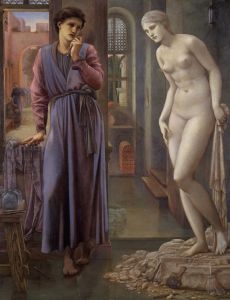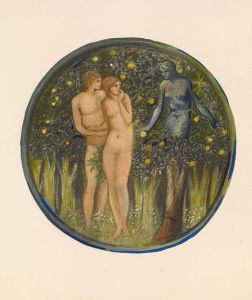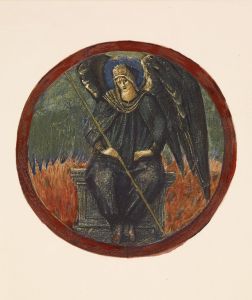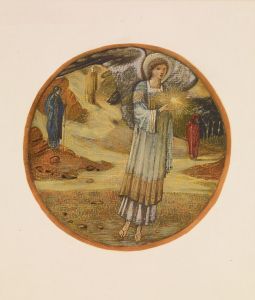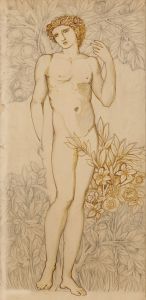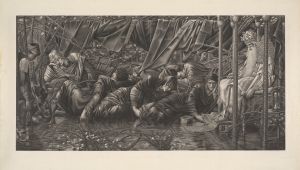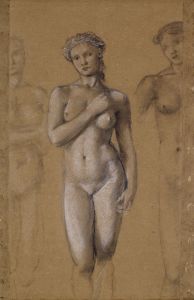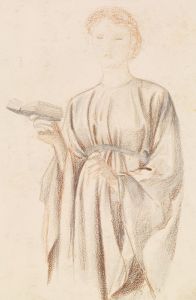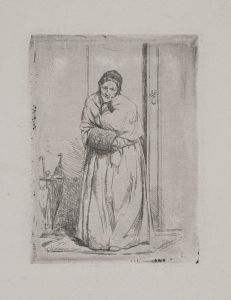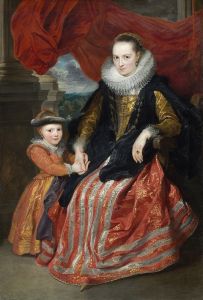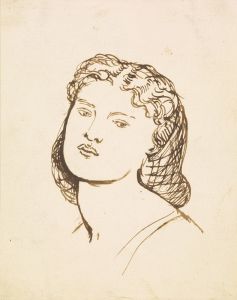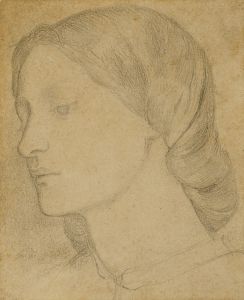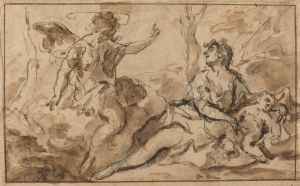
Virgin and Child
A hand-painted replica of Sir Edward Coley Burne-Jones’s masterpiece Virgin and Child, meticulously crafted by professional artists to capture the true essence of the original. Each piece is created with museum-quality canvas and rare mineral pigments, carefully painted by experienced artists with delicate brushstrokes and rich, layered colors to perfectly recreate the texture of the original artwork. Unlike machine-printed reproductions, this hand-painted version brings the painting to life, infused with the artist’s emotions and skill in every stroke. Whether for personal collection or home decoration, it instantly elevates the artistic atmosphere of any space.
Sir Edward Coley Burne-Jones was a prominent British artist and designer associated with the later phase of the Pre-Raphaelite movement and the Arts and Crafts Movement. His work is characterized by its romantic style and medieval influences, often depicting mythological and religious themes. One of his notable works is "Virgin and Child," which exemplifies his distinctive approach to religious subject matter.
"Virgin and Child" by Burne-Jones is a painting that reflects his fascination with medieval art and his commitment to reviving the artistic ideals of the past. The painting portrays the Virgin Mary holding the infant Jesus, a common theme in Christian art that symbolizes purity, motherhood, and divine love. Burne-Jones's interpretation of this theme is marked by his unique style, which combines elements of the Pre-Raphaelite aesthetic with his own artistic vision.
The painting is characterized by its delicate use of color and intricate detail, hallmarks of Burne-Jones's work. The figures of the Virgin and Child are rendered with a sense of grace and serenity, capturing the tender relationship between mother and child. Burne-Jones's use of soft, muted colors and careful attention to the drapery of the Virgin's garments contribute to the ethereal quality of the painting. The background is often simple, focusing the viewer's attention on the central figures and enhancing the sense of intimacy and devotion.
Burne-Jones was known for his meticulous approach to composition and design, and "Virgin and Child" is no exception. The painting reflects his interest in medieval iconography and his desire to create works that were both beautiful and spiritually resonant. His attention to detail and his ability to convey emotion through his art are evident in the gentle expressions and gestures of the figures.
The influence of the Pre-Raphaelite Brotherhood, of which Burne-Jones was a later member, is apparent in the painting's emphasis on naturalism and its rejection of the academic art conventions of the time. The Pre-Raphaelites sought to return to the rich detail, vibrant colors, and complex compositions of early Renaissance art, and Burne-Jones's "Virgin and Child" embodies these principles.
Burne-Jones's work, including "Virgin and Child," had a significant impact on the development of British art in the late 19th century. His paintings were celebrated for their beauty and their ability to evoke a sense of wonder and reverence. "Virgin and Child" remains an important example of his contribution to religious art and his ability to reinterpret traditional themes in a way that was both innovative and deeply respectful of the past.
While specific details about the provenance or current location of "Virgin and Child" might not be widely documented, Burne-Jones's work continues to be studied and appreciated for its artistic and historical significance. His paintings are held in various collections around the world, and his influence can be seen in the work of subsequent generations of artists who were inspired by his vision and dedication to beauty and craftsmanship.





